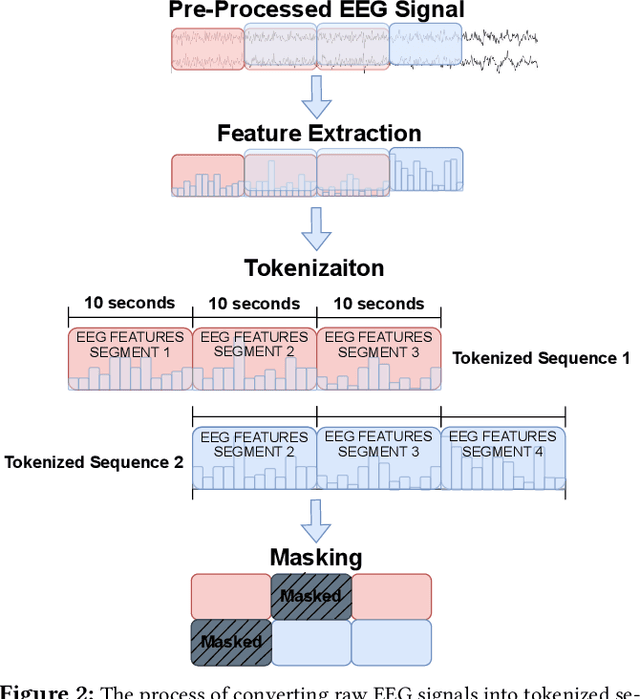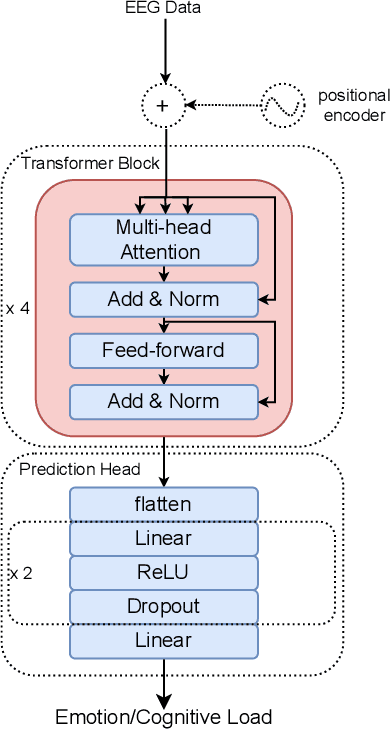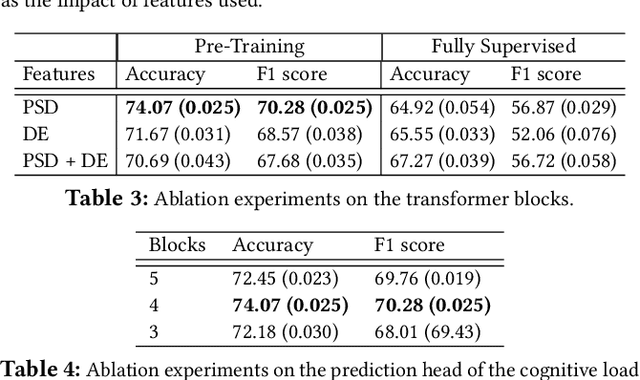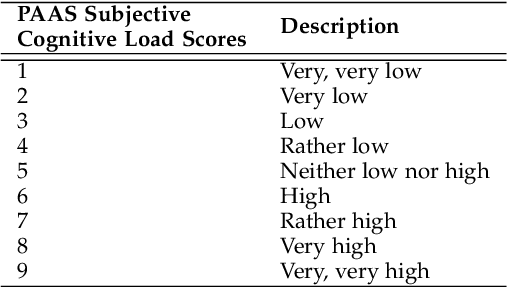Prithila Angkan
CLARE: Cognitive Load Assessment in REaltime with Multimodal Data
Apr 26, 2024



Abstract:We present a novel multimodal dataset for Cognitive Load Assessment in REaltime (CLARE). The dataset contains physiological and gaze data from 24 participants with self-reported cognitive load scores as ground-truth labels. The dataset consists of four modalities, namely, Electrocardiography (ECG), Electrodermal Activity (EDA), Electroencephalogram (EEG), and Gaze tracking. To map diverse levels of mental load on participants during experiments, each participant completed four nine-minutes sessions on a computer-based operator performance and mental workload task (the MATB-II software) with varying levels of complexity in one minute segments. During the experiment, participants reported their cognitive load every 10 seconds. For the dataset, we also provide benchmark binary classification results with machine learning and deep learning models on two different evaluation schemes, namely, 10-fold and leave-one-subject-out (LOSO) cross-validation. Benchmark results show that for 10-fold evaluation, the convolutional neural network (CNN) based deep learning model achieves the best classification performance with ECG, EDA, and Gaze. In contrast, for LOSO, the best performance is achieved by the deep learning model with ECG, EDA, and EEG.
EEG-based Cognitive Load Classification using Feature Masked Autoencoding and Emotion Transfer Learning
Aug 01, 2023



Abstract:Cognitive load, the amount of mental effort required for task completion, plays an important role in performance and decision-making outcomes, making its classification and analysis essential in various sensitive domains. In this paper, we present a new solution for the classification of cognitive load using electroencephalogram (EEG). Our model uses a transformer architecture employing transfer learning between emotions and cognitive load. We pre-train our model using self-supervised masked autoencoding on emotion-related EEG datasets and use transfer learning with both frozen weights and fine-tuning to perform downstream cognitive load classification. To evaluate our method, we carry out a series of experiments utilizing two publicly available EEG-based emotion datasets, namely SEED and SEED-IV, for pre-training, while we use the CL-Drive dataset for downstream cognitive load classification. The results of our experiments show that our proposed approach achieves strong results and outperforms conventional single-stage fully supervised learning. Moreover, we perform detailed ablation and sensitivity studies to evaluate the impact of different aspects of our proposed solution. This research contributes to the growing body of literature in affective computing with a focus on cognitive load, and opens up new avenues for future research in the field of cross-domain transfer learning using self-supervised pre-training.
Multimodal Brain-Computer Interface for In-Vehicle Driver Cognitive Load Measurement: Dataset and Baselines
Apr 09, 2023



Abstract:Through this paper, we introduce a novel driver cognitive load assessment dataset, CL-Drive, which contains Electroencephalogram (EEG) signals along with other physiological signals such as Electrocardiography (ECG) and Electrodermal Activity (EDA) as well as eye tracking data. The data was collected from 21 subjects while driving in an immersive vehicle simulator, in various driving conditions, to induce different levels of cognitive load in the subjects. The tasks consisted of 9 complexity levels for 3 minutes each. Each driver reported their subjective cognitive load every 10 seconds throughout the experiment. The dataset contains the subjective cognitive load recorded as ground truth. In this paper, we also provide benchmark classification results for different machine learning and deep learning models for both binary and ternary label distributions. We followed 2 evaluation criteria namely 10-fold and leave-one-subject-out (LOSO). We have trained our models on both hand-crafted features as well as on raw data.
 Add to Chrome
Add to Chrome Add to Firefox
Add to Firefox Add to Edge
Add to Edge